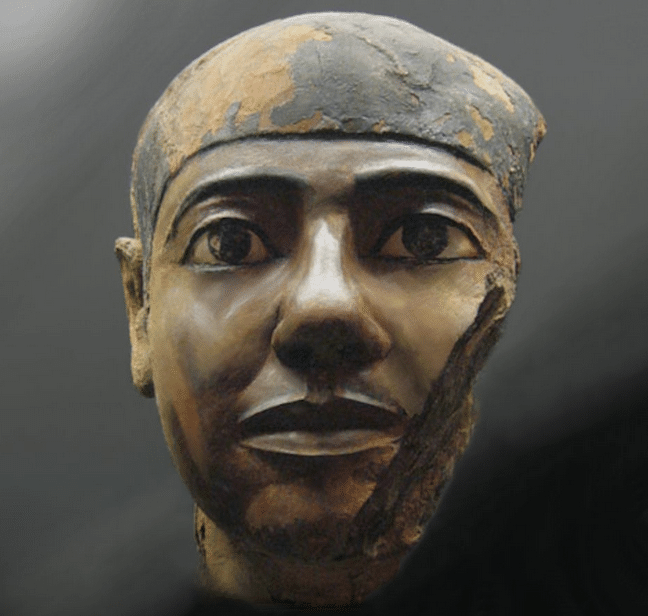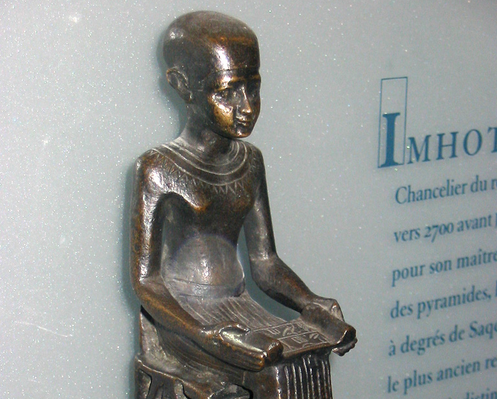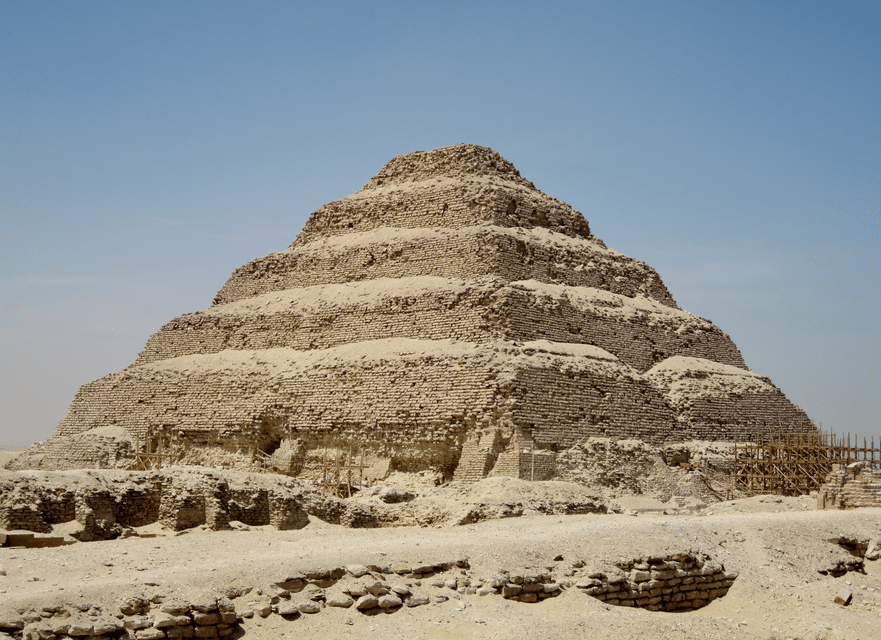Deification is the process through which a normal person is exalted to a godly position. In ancient Egypt, deification was only reserved for the royals or the pharaohs who were deemed to be earthly gods.
They achieved an even higher divine status after death. Very few non-royals went through deification and Imhotep was one of them.
Imhotep meaning
Imhotep is a Greek word meaning ‘he that comes in peace’. Born in 27th century, Egypt, Imhotep was no only a physician but also an architect, astrologer, scribe, politician and priest.
He is a renowned scholar and contributed greatly to Egypt’s civilization. Apart from Amenhotep, he is the only other Egyptian to be deified. As a vizier, it was his duty to oversee everything in the land and only the finest educated could hold that position.
He was also a spiritual advisor, closely worked with the king and in charge of the judicial system. Despite as being a vizier of Djoser, it is architectural capabilities that put him on the map.
What architect gained fame by building the first pyramid?
Ancient Egyptian pyramids were built to preserve bodies as destroying a corpse was considered to be the worst treatment to be accorded to anyone.
The bodies, more so the pharaoh’s were well preserved to enable them transcend seamlessly into the afterlife. Initially, mastabas were used as tombs.
They were monuments made of clay brick that were rectangular in shape and were used to cover underground passages where the dead were buried.
This was until Imhotep began the construction of king Djoser’s final resting place. He then built the first pyramid, which was comprised of 6 mastabas increasing in size from top to bottom.
It was the largest at the time. This pyramid is now known as the pyramid of Djoser. It was after this that the 4 sided pyramids came into play.
What did Imhotep do? Pyramid of Djoser
King Djoser was the first king of Egypt’s third dynasty and was also the first to construct in stone. The pyramid of Djoser was constructed to be his tomb by his vizier Imhotep.
It is currently known as the step pyramid due to its structure and design. This pyramid is located in Saqqara, Egypt and was built somewhere between 2630BC and 2611 BC.
The pyramid of Djoser is considered to be the oldest large-scale stone monument that is still intact in the whole world. This pyramid is 197ft high and was built using 11.6 million cubic ft. of clay and stone.
It was part of a 40- acre complex that consisted of various building serving spiritual purposes including chapels and temples.
Both Djoser and Imhotep’s names were inscribed on this complex. All these buildings were protected by a 30ft. wall that not only had the entrance into the complex but also 13 fake doors.
Djoser’s burial chambers
Djoser’s burial chambers were built deep into the pyramid as were his 11 daughter’s chambers. These chambers are part of maze like tunnels that wind throughout the pyramid.
It is believed that these tunnels were designed to discourage tomb thieves and protect the king’s body. Granite was used to make Djoser’s burial chambers.
To get to these chambers, one had to go through corridors lines with thousands of vessels. These stone vessels were inscribed with previous kings’ names mostly from the 1st and 2nd dynasty.
Even with the series of tunnels, robbers still managed to rob the grave, making way with precious valuables and even the king’s mummy.
Sadly, the state of the steps pyramid has deteriorated, partly due to an earthquake in 1992 CE. This raised a fear that the tunnels could collapse, taking out this historical monument.
Conservation efforts were put in place and for this reason, visitors are not allowed to enter the pyramid, but can only view it from outside.
What was Imhotep the god of?
Despite being a master scholar in various fields, in Egypt, Imhotep was deifies to be the god of wisdom and medicine. After his deification, he was identified with Asclepius, a Greek medicine god.
Imhotep was deified in 1525 BC during Egypt’s Persian conquest. He replaced Nefertem in Memphis’ great triad. Even after dying in 2950BC, his legacy still lives on.
The steps pyramid is still one of the greatest tourist sites in Egypt despite being under conservation.
Imhotep, the first doctor in history
Although Hippocrates is considered by many to be the father of Medicine, he is not really the first doctor in history (although his contribution is undeniable). That honor would fall to the Egyptian scholar Imhotep.
Was Imhotep the father of medicine?
Although the step pyramid is considered his greatest achievement, he is also remembered for his medical treatises, where he considers that diseases and injuries are of natural origin rather than punishments sent by the gods or caused by spirits or curses.
Imhotep was practicing medicine and writing on the subject more than 2000 years before Hippocrates was born.
He is also believed to be the author of Edwin Smith’s Papyrus, an ancient Egyptian medical text, which contains almost 100 anatomical terms and describes 48 injuries and their treatment.
Thus, Egyptian medicine initiated by Imhotep was the first to analyze the disease from a rational point of view, renouncing mythological explanations.
Of the details of his life, very little has survived despite the fact that numerous statues of him have been found.
Some show him as an ordinary man who dresses in normal clothes.
Others show him as a sage who is sitting in a chair with a papyrus scroll on his knees or under his arm.
Later, his statues show him with the beard, standing, and carrying the ankh and a scepter.
Where is Imhotep buried? Imhotep’s Lost Tomb?
One of the scariest movies I remember seeing as a child has been The Mummy (1999) by Stephen Sommers.
In the movie the main antagonist is a character called Imhotep, high priest of Pharaoh Seti.
Obviously, the Imhotep of the movie is not the same Imhotep of this article.
In fact, the Imhotep in which we are interested lived during the Old Kingdom, more than a thousand years before the reign of Seti I.
Today there are still those who remain obsessed with finding his lost grave.
Even in ancient times it seems that the location of Imhotep’s tomb was unknown, as mentioned in an ancient Egyptian poem called The Song of the Harp.
According to general opinion, Imhotep’s grave would be hidden in the Saqqara area, perhaps near – or even below – the step pyramid of Djoser.
While the Saqqara Geophysical Survey Project has indeed achieved very interesting results, there is no statement that Imhotep’s tomb has been found.








